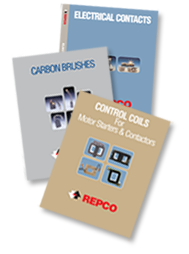AUTUMN EQUINOX
The autumn equinox will occur on Wednesday, September 23rd , in the Northern Hemisphere, when the sun is directly in line with Earth's celestial equator. Day and night will be equally long with 12 hours of light and 12 hours of darkness occurring. This same phenomenon occurs on the spring equinox, which will next happen on Sunday, March 20, 2016.
On the first day of autumn, the sun is aligned with the center between the North and the South of the planet. On that day, the light and dark hours are exactly the same length. That’s why it is called ‘equinox’, derived from the Latin word ‘aequus’ which means ‘equal’.
Not everyone has seasons at the same time. The equinox happens twice a year, and depending on which side of the planet you live, autumn will start in March (for south) or September (for north). If you live in a place too close to the Equator, or in the central area of the planet, then you’ll never have autumn or any change of seasons.
Autumn gets its own full moon, the Harvest Moon. The Harvest Moon is the full moon closest to the autumn equinox. Before artificial lighting, farmers took advantage of the full moon's light to harvest their crops. In late summer and early autumn, many crops ripen all at once, making lots of work for farmers who had to stay in the fields after sundown to harvest all the goods. Such moonlight became essential to their harvest, hence the Harvest Moon.
There are only two days of the year when you can stand an egg on its end, the autumn and spring equinox. To do this you will need an egg. (It does not have to be hard-boiled.) Place the egg on a hard, flat surface on its largest end. Carefully pull your hands away and it should remain upright.
AUTUMN COLORS
Each autumn, areas with deciduous trees provide a beautiful show of colors. Did you ever wonder why this happens?
Leaves are nature’s food factories. Plants take water from the ground through their roots. They take carbon dioxide gas from the air. Plants use sunlight to turn the water and carbon dioxide into glucose or sugar. This process is known as photosynthesis. It also gives leaves their green color. Plants use the glucose as food for energy and as a building block for growth.
As summer ends and autumn arrives, the availability of sunlight lessens. This is the main thing that helps trees to ‘know’ that it is time to get ready for winter. During the winter months, there is not enough light or water for photosynthesis. The trees go into a resting state and live off the food they’ve stored during the summer. As the trees begin to shut down their food-making factories, the green chlorophyll disappears from the leaves. The green color gives way to yellow, orange and red.
When do we see the brilliant reds during some fall seasons? This occurs when the glucose is not absorbed into the branches of the tree and becomes trapped in the leaves after photosynthesis stops. Bright, sunny days and cool evenings are responsible for turning the glucose into a bright red color.
What happens when the leaves turn brown and finally die? You stop enjoying the colors and get out the rake!

- Electrical Contacts
Electrical Contacts
- Carbon Brushes
Carbon Brushes : Brush Reference
- Control Coils
Control Coils
- Other Contactor Parts
- More
- Search
- Auxiliary Contacts
Auxiliary Contacts
- Shunts
Shunts
- Springs
Springs
- AC Contactors & Starters
AC Contactors & Starters
- DC Contactors
DC Contactors
- Drives
Drives
- Fuses
The Lighter Side (Aug 2015)
August 28, 2015
« Return To Articles
Quick Contact
Newsletter Signup
Join our email list and we will keep you informed of sales and promotions and other great deals!
Email SubscribeRequest Literature
Request our Electrical Contact, Carbon Brush, or Control Coil catalogs (via Mail).
Request NowInternational: 856-762-0172
Domestic: 800-822-9190
Literature Request Or Download
Click here to download or browse our Electrical Contact, Carbon Brush, or Control Coil catalogs online.

Repco
100 Sonwil Drive
Buffalo NY 14225Repco Quick Contact
We are excited to announce that REPCO has merged with USA Industrials.
For all inquiries, please contact us at service@usaindustrials.com or give us a call at 800-822-9190.
We appreciate your understanding and look forward to serving you better with our expanded capabilities.
- Carbon Brushes